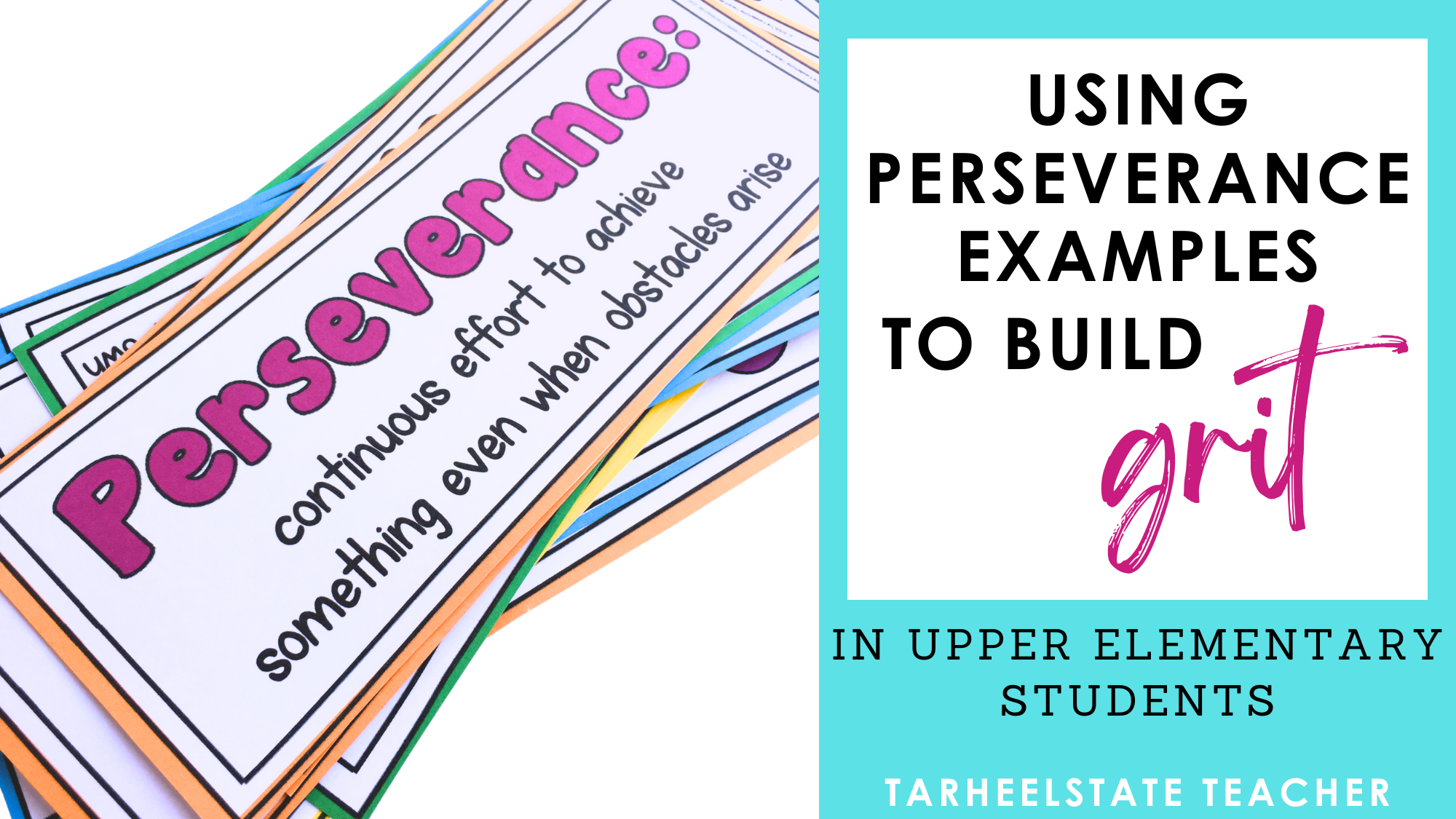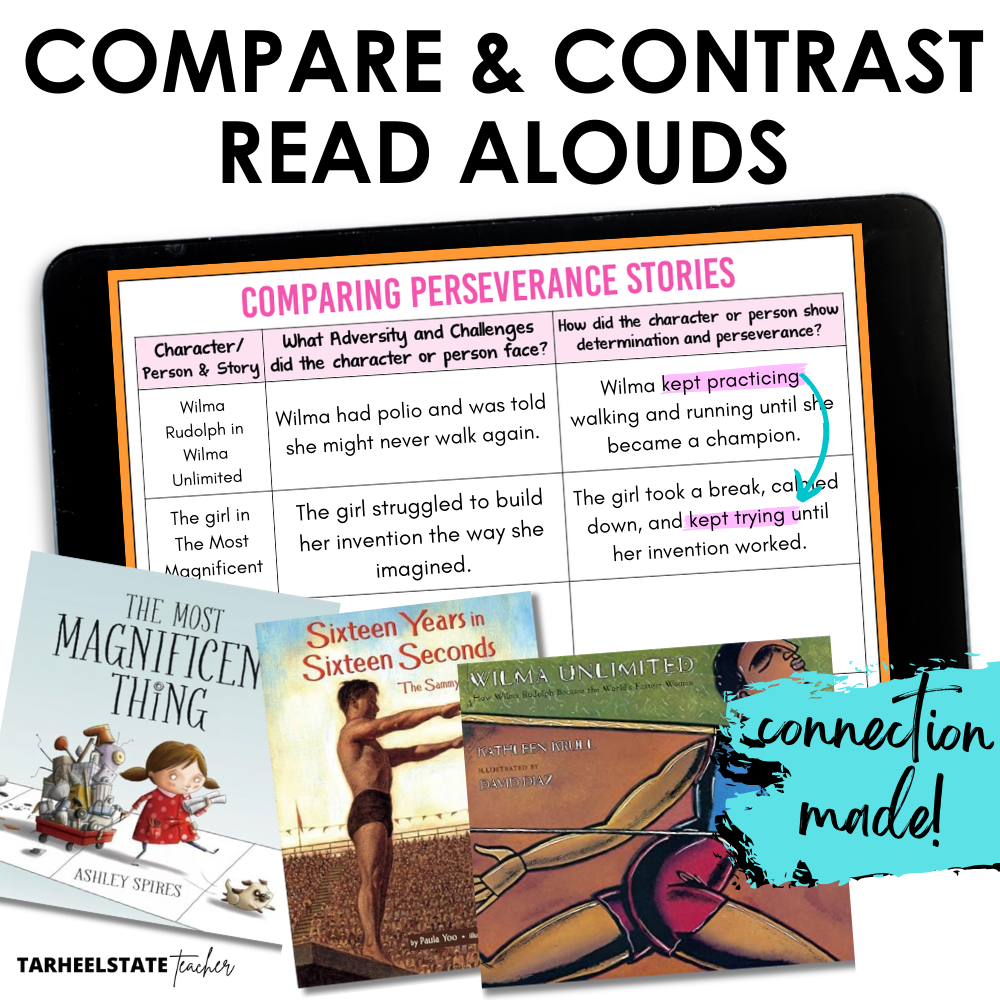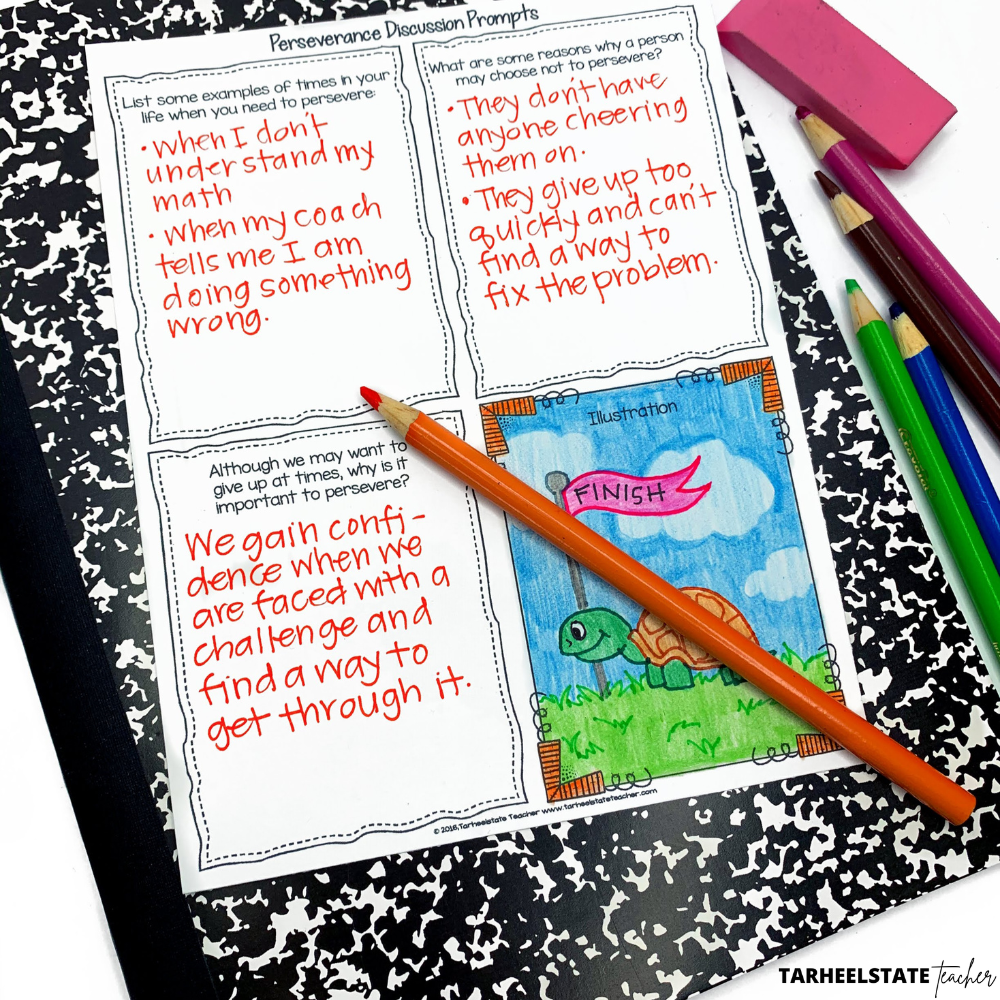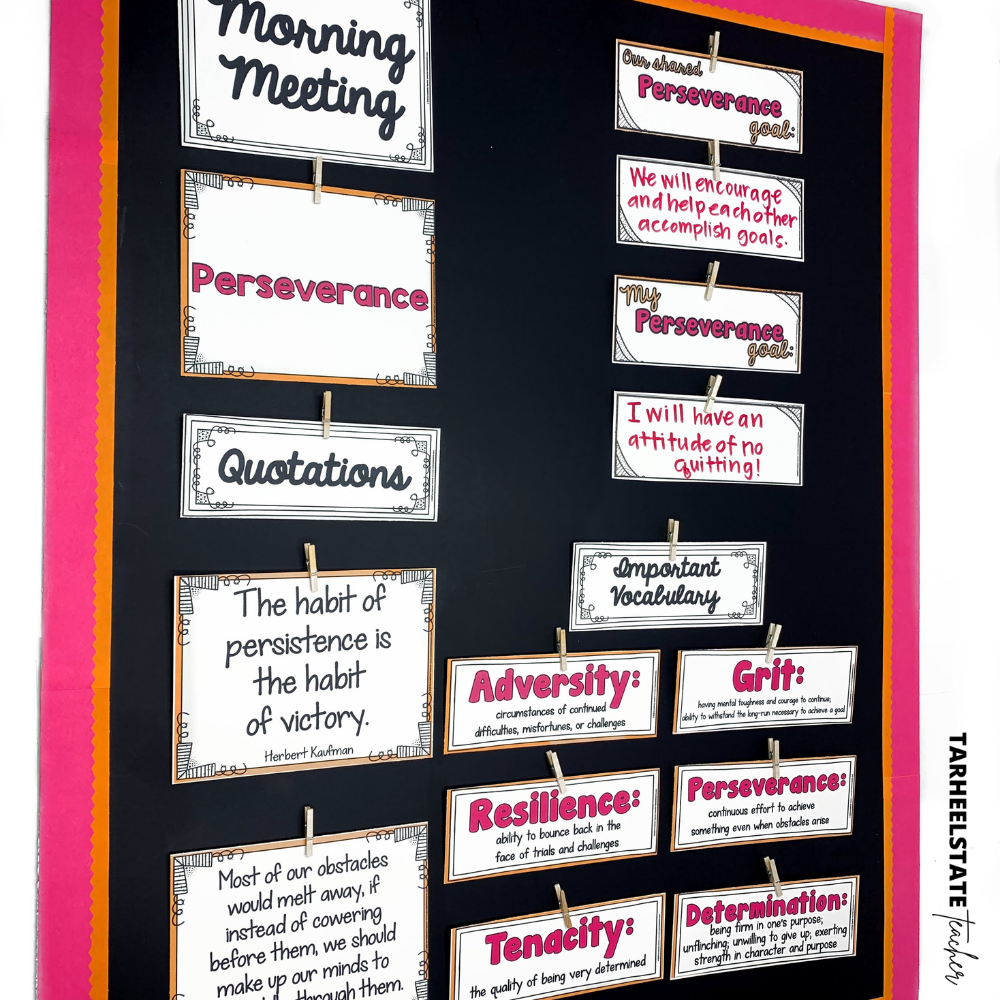Using Perseverance Examples to Build Grit in Upper Elementary Students
Have you ever watched a student give up just minutes into a challenging task? Maybe it was during a multi-step word problem, a persuasive writing draft, or even a simple STEM challenge. As teachers, we know the feeling: you’ve planned something meaningful, but the moment it gets tough, some students shut down.
This isn’t just about academic stamina—it’s about grit.
Teaching perseverance in upper elementary classrooms is more than encouraging students to “keep going.” It’s about helping them build resilience, confidence, and the belief that mistakes and struggle are part of the learning process.
The Problem: Why Students Give Up Too Easily
In the upper elementary years, we start to see a shift. Students become more aware of their strengths—and their insecurities. Some are quick to label themselves: “I’m bad at math.” “I’m not good at writing.” “I’ll never finish this.”
This mindset can lead students to avoid difficult tasks altogether. Instead of working through frustration, they may ask for help immediately, rush through work, or give up entirely.
Without intentional guidance, students may not learn that perseverance is a skill they can build—not just something you’re born with.
The Solution: Teaching Perseverance Through Examples
One of the most effective ways to teach grit is by highlighting perseverance when it shows up—in stories, in classroom moments, and even in your own life.
When students see what perseverance looks like and hear real examples, they begin to recognize it in themselves and others. These perseverance examples help shift the narrative from “I can’t do this” to “This is hard, but I can try again.”
How to Use Perseverance Examples in Your Classroom
Perseverance becomes real for students when they get to explore it in different contexts—academically, socially, and personally. These strategies give students meaningful ways to connect with the concept of grit, reflect on it, and practice it in ways that feel authentic.
1) THINK IT THROUGH: RESPONDING WITH DETERMINATION
Give students time to work through what perseverance looks like in specific situations. Present both academic and social examples—like struggling through a tricky assignment, working with a difficult partner, or feeling left out.
I like to choose a few perseverance examples to think through together and discuss as a whole group.
For example,
Amir had been learning a new math skill but kept making errors on assignments. After extra help, he felt more confident, but the unit test was so hard that he couldn't even finish it.
How might the student feel?
What negative thoughts might they be having?
What are some positive affirmations they could use to stay motivated?
As I model how someone might respond to the challenge, we brainstorm helpful strategies for persevering through it. Then, I invite students to share their own thoughts and ideas. A variety of perseverance examples help make the concept of perseverance more relatable and actionable for students.
After discussing a few examples in whole group, I allow them to work in small groups or individually to practice responding to different perseverance examples. This allows students to reflect on and rehearse the kinds of thinking and actions that build true grit. When students reflect before a moment of challenge arises, they’re more likely to act with intention during one.
2) ROLE-PLAY REAL-LIFE CHALLENGES
Sometimes students need to feel a situation to truly understand it. Role-play lets them step into perseverance-based challenges—especially in social-emotional moments.
Use short, relatable scripts or situation cards that focus on things like:
Navigating a conflict with a friend
Feeling frustrated after being left out
Wanting to give up during a group project
Role-play gives students a chance to rehearse positive ways to respond with perseverance. They get to see that drawing on determination helps them not just academically, but in friendships, teamwork, and emotional self-management.
🌟 I’m kind of obsessed with using SEL scenarios for role-play in the classroom! Check out my role-play scenario cards bundle for conflict resolution, honesty & integrity, managing emotions, friendship challenges, practicing assertive communication, empathy and compassion, student apathy and motivation, and kindness scenario cards.)
3) REFLECT ON REAL PEOPLE WHO DIDN’T GIVE UP
Books, biographies, and short videos about perseverance are powerful tools for making grit visible. Whether it’s a scientist, athlete, artist, or someone from history, these stories show perseverance in action—and that it often involves setbacks, mistakes, and starting over.
Some of my favorite stories about perseverance are The Most Magnificent Thing by Ashley Spires, Wilma Unlimited by Kathleen Krull, and Sixteen Years In Sixteen Seconds by Paula Yoo. Check out other great ones here.
🌟During my Perseverance and Grit Unit, I lead my students through a compare and contrast activity after reading aloud (or viewing) a variety of stories of perseverance. By examining the situations, characters, and ways perseverance is demonstrated in each story, we’re able to identify common themes and big ideas that help bring the concept to life. Making connections across texts not only strengthens comprehension—it also helps students internalize what perseverance looks and feels like in real life.
4) NOTICE PERSEVERANCE IN PEERS
When students start to notice determination in each other, perseverance becomes part of your classroom culture.
Try a weekly practice like:
“Perseverance Shout-Outs” where students compliment classmates who kept trying
A sticky note wall or poster where kids write examples they saw during the week
Quick class shares: “Who saw someone push through something hard today?”
These peer reflections help students see that grit isn’t just something grown-ups talk about—it’s something they can live out and recognize in others.
🌟 My students LOVE this peer interview activity from my Growth Mindset Unit pictured below. They enjoy partnering up to share challenges they’ve faced and how they worked through them.
5) REFLECT ON YOUR OWN PERSEVERANCE
Help students turn inward by thinking about a time they didn’t give up. This could be academic, emotional, or social. Offer prompts like:
“A time I kept going even when I felt frustrated was…”
“I felt proud of myself when I didn’t give up on…”
“The hardest part was… but I kept going by…”
Use these reflections during morning meeting, quiet work time, or in a perseverance journal. Revisiting their own stories helps students internalize that they already have grit—and can keep building it.
QUICK TIPS TO REINFORCE GRIT DAILY
🌟 Start the day with a quote about perseverance for students to discuss or reflect on.
🌟 Have students track a personal goal or challenge and reflect on their progress weekly.
🌟 Introduce the power of yet, positive self-talk, and affirmations.
🌟 Hand out “Perseverance Praise” notes or stickers for effort and progress, not just final results.
🌟 Display shared or individual Perseverance Goals on a classroom wall or bulletin board.
When we highlight perseverance in everyday moments, we help students build grit not just for school—but for life. The goal isn’t perfection. It’s helping students believe they can grow through challenge and keep going, even when things get hard. That kind of mindset can shape how they approach obstacles for years to come.
NEED MORE PERSEVERANCE & GRIT ACTIVITIES AND DONE-FOR-YOU RESOURCES FOR TEACHING PERSEVERANCE?
You can manage to do each of these activities with a reflection journal and materials you have around the classroom, but if you want some of the work done for you, you can check out my Perseverance theme SEL unit. I use this unit for a 2-3 week morning meeting unit. It includes student journal pages, detailed and editable perseverance lesson plans, bulletin board materials with perseverance vocabulary and related perseverance quotations, and Google Slides for the teacher and a digital student notebook.
This Perseverance theme SEL unit is also included in the SEL Morning Meeting MEGA Bundle that contains 16 social-emotional learning themes. If you’re looking to increase your social-emotional learning focus, you’ve come to the right place!
SEL THEMES TO GUIDE YOUR MORNING MEETINGS ALL YEAR
With units focused on gratitude, empathy and compassion, growth mindset, conflict resolution and compromise, grit and perseverance, responsibility, understanding and managing emotions, and so much more, your engaging SEL or morning meeting plans are done for you and your students will love them!
If you purchase the bundle from my personal website store, you can save an additional 20% on the SEL Mega Bundle of all 16 topics with the code SEL20.










